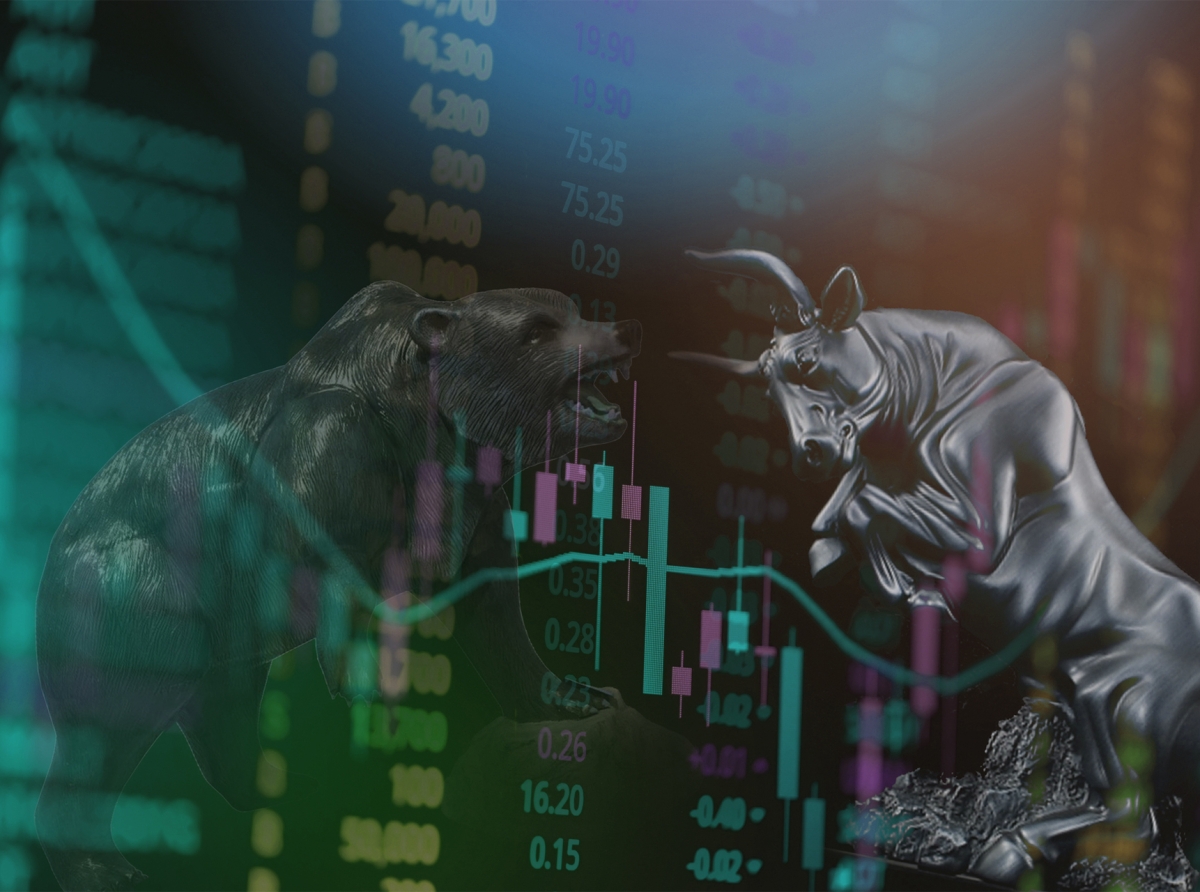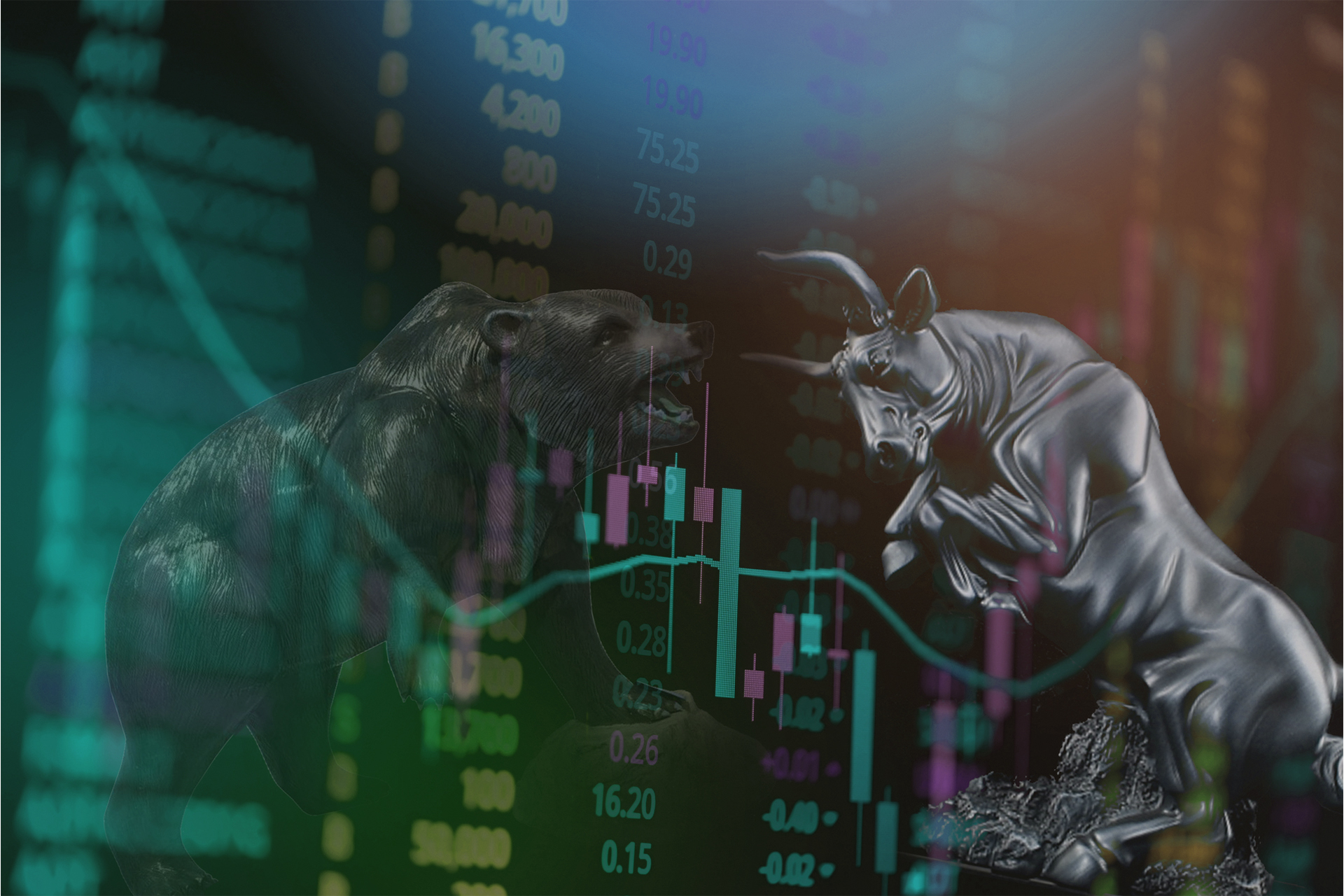
"Bulls" and "Bears" in the Forex Market
The terms "bulls" and "bears" are widely recognized in the world of finance and trading, including the Forex market.
These metaphors describe the opposing market forces that drive price movement and reflect the emotional dynamics of traders and investors.
But what do these terms really mean, and how do they influence Forex trading?
Let’s take a closer look.
These metaphors describe the opposing market forces that drive price movement and reflect the emotional dynamics of traders and investors.
But what do these terms really mean, and how do they influence Forex trading?
Let’s take a closer look.

"Bulls" and "Bears" in the Forex Market
What Are Bulls and Bears?
In the simplest terms:Bulls represent traders or investors who believe prices will rise. They buy currencies with the expectation of selling them later at a higher price, profiting from the upward movement.
Bears are the opposite—they expect prices to fall. Bears sell currencies they don’t own (short-selling) or close long positions, hoping to repurchase at a lower price.
The interplay between these two forces creates the constant push-and-pull dynamic in the Forex market. Prices rise when bulls dominate and fall when bears take control.
Why Are They Called Bulls and Bears?
The terminology stems from how these animals attack:Bulls thrust their horns upward, symbolizing rising markets.
Bears swipe their paws downward, representing falling markets.
These vivid analogies make it easier to visualize market trends and dynamics, which is why they’ve become a universal language in the financial world.
Bullish and Bearish Trends
In the Forex market, trends are categorized as either bullish or bearish:
Bullish Market (Uptrend):
A bullish market occurs when a currency pair’s price consistently rises over a period of time. Bullish trends often reflect optimism about a country’s economic outlook, positive geopolitical developments, or strong economic data such as rising GDP, lower unemployment, or higher interest rates.
Example: If traders believe the US economy will outperform the Eurozone, they may buy USD/EUR, driving the US dollar higher against the euro.
Bearish Market (Downtrend):
A bearish market occurs when prices fall steadily. Bearish trends can be triggered by negative economic data, political instability, or expectations of weaker economic performance.
Example: If Japan faces an economic slowdown, traders might sell JPY pairs, leading to a depreciation of the yen.
Bulls vs. Bears: Market Sentiment
The battle between bulls and bears defines market sentiment, which is a key factor influencing Forex trading decisions.Bullish Sentiment:
When traders are optimistic, they buy currencies they expect to strengthen. This could be driven by strong economic indicators, central bank hawkishness, or positive geopolitical developments.
Bearish Sentiment:
Pessimism drives traders to sell currencies they expect to weaken. This often occurs during economic downturns, rising inflation, or political instability.
Market sentiment is contagious and can create self-fulfilling prophecies. For example, if enough traders believe the euro will strengthen, they may start buying it, causing its price to rise.
How Bulls and Bears Shape Forex Market Movements
In the Forex market, price movements result from the collective actions of bulls and bears. Let’s break down the dynamics:Demand and Supply:
Bulls increase demand by buying, pushing prices up. Bears increase supply by selling, driving prices down.
Breakouts and Reversals:
Bullish breakouts occur when bulls overpower bears, pushing prices beyond resistance levels. Bearish reversals happen when bears regain control, breaking support levels.
Volatility:
The intensity of the battle between bulls and bears often dictates market volatility. A strong disagreement between these groups can lead to sharp price movements, creating opportunities and risks for traders.
Bullish and Bearish Strategies for Forex Traders
Forex traders can adopt bullish or bearish strategies depending on market conditions:Bullish Strategy:
Identify strong support levels where price bounces upward.
Use technical indicators like moving averages or RSI to confirm upward momentum.
Enter long positions in currency pairs expected to appreciate, such as buying EUR/USD in anticipation of euro strength.
Bearish Strategy:
Look for resistance levels where price tends to fall.
Confirm downtrends using tools like MACD or trendlines.
Enter short positions in currency pairs likely to weaken, such as selling GBP/USD if the pound is expected to decline.
Fundamental Drivers of Bulls and Bears in Forex
Bulls and bears don’t act randomly; their actions are often driven by fundamental factors:Economic Indicators:
Bullish: Rising GDP, strong employment data, or higher interest rates can fuel optimism.
Bearish: Weak growth, high unemployment, or dovish central bank policies lead to pessimism.
Geopolitical Events:
Political stability often encourages bullish sentiment. Conversely, conflicts or uncertainty can spark bearish trends.
Central Bank Policies:
Hawkish policies (rate hikes) attract bulls, while dovish stances (rate cuts) invite bears.
Market News:
Positive developments, like trade agreements, attract bulls. Negative news, such as trade wars, emboldens bears.
The Importance of Balance
A successful Forex trader understands both bullish and bearish perspectives. Even in a bull market, there are moments of bearish pullbacks, and vice versa. Recognizing these dynamics helps traders:- Avoid overconfidence. A bullish rally can reverse quickly; staying cautious prevents large losses.
- Spot opportunities. Even in bearish conditions, there are bullish opportunities in other currency pairs.
- Experienced traders learn to adapt to changing market conditions, switching between bullish and bearish strategies as needed.
Conclusion
The battle between bulls and bears is at the heart of the Forex market. Understanding their dynamics provides valuable insights into market movements and helps traders develop effective strategies.
Remember, no market is permanently bullish or bearish.
The balance between these forces constantly shifts, creating opportunities for those who can analyze and adapt. Whether you’re rooting for the bulls or siding with the bears, mastering their behavior is essential for long-term success in Forex trading.
The battle between bulls and bears is at the heart of the Forex market. Understanding their dynamics provides valuable insights into market movements and helps traders develop effective strategies.
Remember, no market is permanently bullish or bearish.
The balance between these forces constantly shifts, creating opportunities for those who can analyze and adapt. Whether you’re rooting for the bulls or siding with the bears, mastering their behavior is essential for long-term success in Forex trading.









Report
My comments